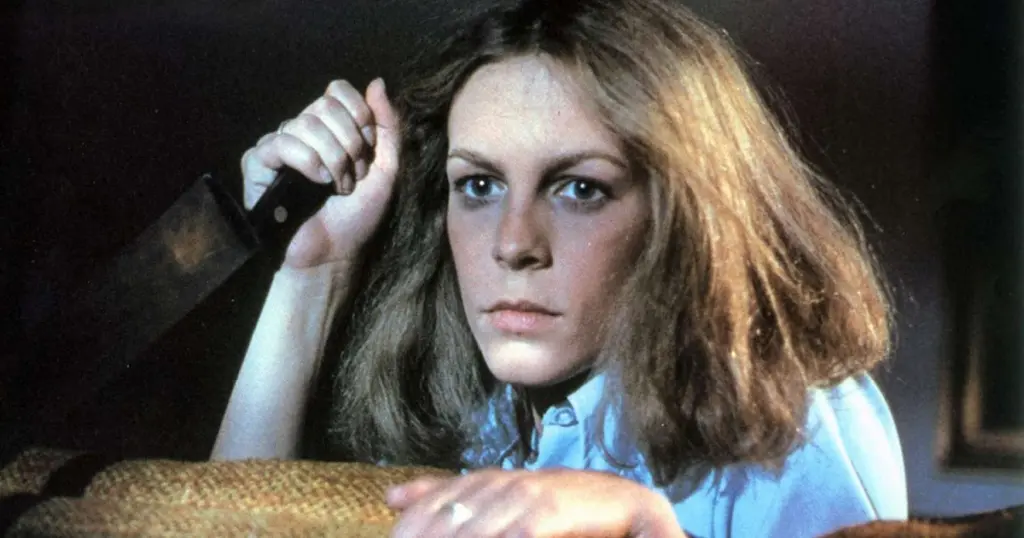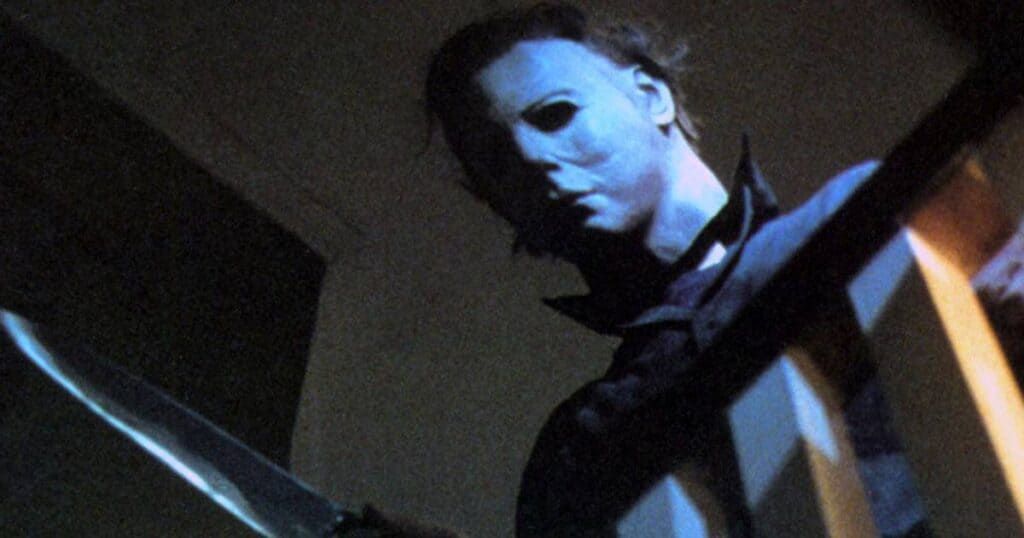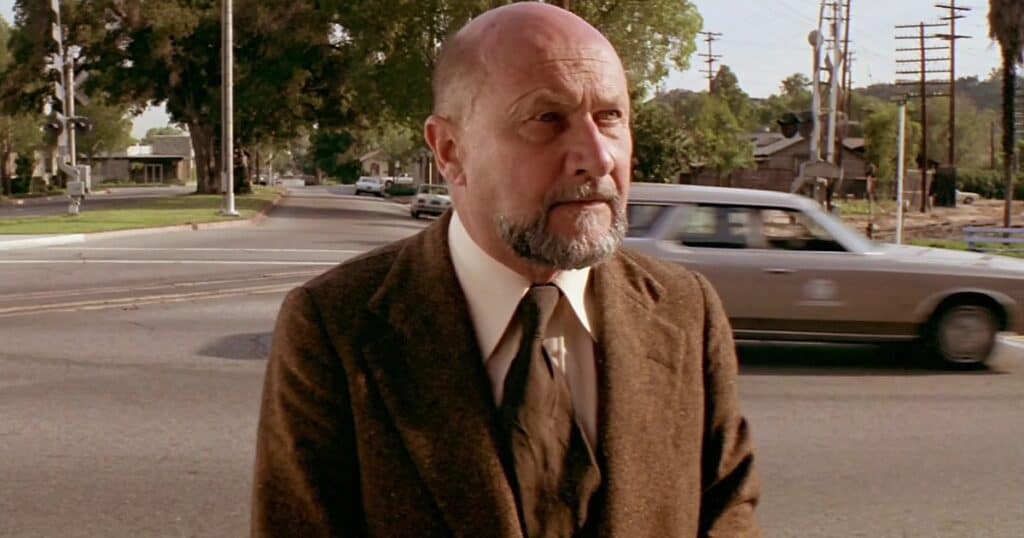The Halloween episode of WTF Happened to This Horror Movie? was Written by Eric Walkuski, Narrated and Edited by Tyler Nichols, Produced by Lance Vlcek and John Fallon, and Executive Produced by Berge Garabedian.
In 1978, the landscape of horror changed forever with the release of John Carpenter’s Halloween (watch it HERE). Jumping off from a very simple premise, Carpenter crafted a vision of terror unlike anything that had been seen before. Though there were movies not unlike it prior to its release, Halloween’s success would inspire a brand new subgenre: the slasher film, and while there have been many imitations – not to mention sequels and remakes – few horror movies have achieved the kind of glowing praise and reverence that the original Halloween has. Not to mention the fact that it introduced us to one of the most infamous screen villains of all time, Michael Myers, the unstoppable killer without a conscience.
The fact that this hugely successful thriller was made by a group of 20-something newcomers to the business further underlines how much of a once-in-a-lifetime sensation it was. So how did the boogeyman come to life? Grab some candy – or a knife, whatever’s closest – because we’re about to tell you WTF Happened to John Carpenter’s Halloween.
Though Halloween is indeed the brainchild of John Carpenter and his co-writer/producer Debra Hill, the project didn’t originate with them. The man we have to thank for setting things in motion is Irwin Yablans, then an independent producer and the co-founder of Compass International Pictures. Irwin had seen Carpenter’s hard-boiled siege flick Assault on Precinct 13 and was been impressed by the filmmaking on display, even agreeing to help distribute the movie. Furthermore, he decided he wanted to be in the John Carpenter business and pitched the director an idea that had been floating around in his head, about a psychopath who stalks a group of babysitters. Carpenter was just about finished shooting the TV movie Someone’s Watching Me and had no plans after that, so he said, “why not?” The simple title for the project was The Babysitter Murders, although in recent years Yablans has disputed that was ever going to be the actual title.
But the producer eventually had one more notion, one that would change the movie’s entire atmosphere. He was shocked to learn that hardly any horror movies up until that point had actually taken place during Halloween, supposedly the scariest night of the year. He was further surprised to find the title Halloween had never been used. He said to Carpenter, “why don’t we set it on Halloween night? In fact, why don’t we just call it Halloween?” The rest is history.

Both Carpenter and Yablans were in agreement that the film should be suspenseful, not gory. Yablans was particularly inspired by old horror programs he would listen to on the radio as a kid, which in his mind were so scary because they played out vividly in your imagination as opposed to showing you everything. He wanted the audience to be frightened, not repulsed. For Carpenter, he was inspired by the kind of cheap-but-effective frights you’d get as a kid, either at the movies or at a local haunted house. In particular, he remembered seeing William Castle’s House on Haunted Hill, which played with the gimmick that a skeleton would fly out over the audience, scaring the pants off them. Carpenter wanted to give the audience an experience like that. But as a filmmaker, he was influenced by some of the greatest to ever do it: Hitchcock, Ford, Hawkes and Welles, all of whom he’d borrow liberally from throughout his career.
Carpenter had a few stipulations: he wanted to be paid $10,000 to write, direct and compose the music, he wanted final cut, and he wanted his name above the title. While the latter was an unusual request for a relatively new director, Yablans told him that if he could make the film for $300,000, he could have anything he wanted.
Carpenter brought aboard his then-girlfriend Debra Hill, who he’d met during the making of Precinct 13, to be his co-writer and producer. Hill was integral to the formation of the screenplay; it was her responsibility to make the teenage girls at the center of the action sound authentic. Carpenter, on the other hand, focused on the grimmer aspects of the plot, using the idea of an unstoppable evil as the hook. Carpenter had also been inspired by Michael Crichton’s Westworld, specifically the villainous robot played by Yul Brenner, who simply cannot be stopped no matter how many times he’s shot or burned. This vision helped shape – pun intended – what would become the film’s antagonist, Michael Myers. Carpenter and Hill cranked out the script in two-to-three weeks, and with the help of financier Moustapha Akkad, the film was greenlit with that 300K budget.
However, they had a tight schedule to work with. It was already spring of 1978, and the idea was to get the film into theaters by Halloween, naturally. The production had approximately 20 days total to shoot, and they relied heavily on friends and local students to help out. In their late 20s at the time, Carpenter and Hill were just about the oldest people on the crew.
Pasadena, California was going to stand in for Anytown, U.S.A, and one of the main challenges for Carpenter and company was cropping out the palm trees, which would certainly look out of place in the midwest. Another challenge that would be harder to overcome was the lush greenery of the surroundings, since this was springtime in California, not autumn in Illinois. The popular story is that the production would use the same bags of leaves over and over, sprinkling them on the streets and sidewalks right before shooting commenced, then gathering them up for the next shot. They would call the town Haddonfield, named after the town in New Jersey where Debra grew up.
In the matter of casting, Carpenter needed three wholesome American girls to play his babysitters. He’d zeroed in on Anne Lockhart for the central role of Laurie Strode, but was persuaded by Debra Hill to cast Jamie Lee Curtis instead. Curtis was, of course, Hollywood royalty, being the daughter of Tony Curtis and Janet Leigh, but at the time she had only been in a handful of television shows, far from an above-the-title name. But Hill saw the potential in the backstory: here was the daughter of Psycho’s Marion Crane starring in a horror movie about a maniac with a knife. The headlines would write themselves.
For her part, Curtis was unsure if she was right for the role. Personality-wise, she was much closer to the Annie character – sardonic and cynical – than the chaste and virtuous Laurie. After her first day of shooting, Curtis was sure she was doomed to be fired, and when she received a phone call later that night from Carpenter, she was fully prepared to hear him tell her she was a goner. Instead, Curtis heard praise from the director, which gave her the boost to rise to the occasion for the rest of the production.
Casting Annie was fairly easy: Nancy Loomis was the wife of Carpenter’s colleague Tommy Lee Wallace, and had a supporting role in Assault on Precinct 13. She was even a member of the costume department… For the role of the vapid Lynda, Carpenter intentionally wrote it with P.J. Soles in mind, since she’d played a similar part in Brian De Palma’s Carrie. Soles landed the gig and only later discovered that Carpenter wrote it for her specifically. To play Lynda’s boyfriend, Bob, Carpenter asked Soles’ then-husband Dennis Quaid, but he wasn’t available to do it, so John Michael Graham was chosen.

To portray the very formidable character often known as The Shape, Carpenter called upon his friend Nick Castle, who one day had idly asked the director if there was anything he could do to help. Carpenter essentially said, “yeah, you can be the killer.” Carpenter gave Castle no direction other than “just walk,” but the actor did eventually add one of Myers’ signature moments, when he looks upon his victim as a curious dog would a treat. For his work, Castle was paid just $25 a day.
The final piece in the puzzle was the small but crucial role of Dr. Loomis, Michael psychiatrist and eventual hunter. Carpenter knew he needed a name for this part, someone recognizable who could give Loomis the gravitas needed to sell the idea that his former patient is the walking embodiment of evil. Carpenter first went to Peter Cushing, the legendary British thespian best known for his work in Hammer horror movies playing Van Helsing and Dr. Frankenstein. But Cushing had just made Star Wars, the biggest movie of all time, and had no time for Halloween and its small salary. Carpenter then looked toward Cushing’s longtime collaborator Christopher Lee, but Lee turned him down flat. Debra Hill would later say that she bumped into Lee at a convention years later, where he confessed to her that turning down Halloween was the biggest mistake of his career. If that’s true, we’d argue Howling II: Your Sister is a Werewolf is a close second.
Irwin Yablans suggested Donald Pleasence, who’d made an impression playing villains in You Only Live Twice and, in particular, the Charlton Heston western Will Penny. But he’d also played heroes in films like The Great Escape, so he could lend Halloween a character who seemed believably intense and ready for action. Pleasence was offered $20,000 for five days of work, but the story goes that he really took the part because his daughter had been a big fan of Assault on Precinct 13 and encouraged him to do it.
Pleasence and Carpenter didn’t always get along, with the former often pushing the director’s buttons – which Carpenter later admitted he appreciated, because it forced him to learn how to work with actors. Pleasence didn’t completely understand the script, and even infamously criticized it in a featurette for the film. In one instance, Pleasence flat-out refused to say Carpenter’s dialogue. When Loomis calls Haddonfield to warn them Michael is coming, right before he finds the abandoned truck, he was also meant to call his wife at home and reassure her he’s okay. But Pleasence rejected that idea, insisting Loomis should have no personal life or past. Carpenter, too insecure to contradict the veteran actor, agreed with him and cut the dialogue. Pleasence was also a big wine connoisseur, and when he wasn’t shooting he could be found in his trailer – which was allegedly just a Winnebago – helping himself to copious amounts of the stuff. Not that you can tell during the final product, but he’d allegedly had himself a couple bottles right before filming the scene outside the hospital when Michael escapes in the rain.
Though Pleasence’s salary was considerable, a more significant amount of the budget was going to the other key player on the film: the camera. Carpenter knew the film would have to look great in order to make up for the low budget, so he decided to use Panaglide camera rigs to give it a professional, sleek look. More commonly known as a stedicam, the Panaglide enabled the camera department to move freely for long, unbroken takes, and it was much easier than using a dolly with its cumbersome tracks. Halloween would use the Panaglide to great effect throughout, but its biggest contribution came during the terrific opening sequence of the film, which looks for all the world like one unbroken take of our villain preparing to kill. It’s actually two separate takes because they could only shoot for about 4 minutes at a time, but the effect is still brilliant.
Incidentally, that sequence was the last to be filmed during principal photography, because the house itself had to be dressed and painted to look like a normal suburban home. It was chosen because the filmmakers had found it in a state of disrepair – the scene where we meet Laurie and she approaches the house is what it actually looked like, perfect for the film’s needs of displaying the Myers house as being completely dilapidated. So when it came time to shoot the scene where a young Michael stalks his sister, the team had to spiff it up to look like a normal home, hence waiting until the very end of the shoot to film that critical sequence.
One aspect of the film you likely know already is the legend of the mask itself. Described in the script as being made of rubber and having the “grotesque features of a man,” there was plenty of leeway in terms of what it should actually look like. It was up to Tommy Lee Wallace, the film’s production designer and eventual editor, to find the perfect one. Wallace retrieved two masks from a magic shop on Hollywood Boulevard: a sad clown mask and a Captain Kirk mask. The clown mask spoke for itself, but Wallace had to modify the Kirk mask a bit: he shaved the eyebrows and sideburns, cut the eye holes wider, spray-painted it white and dyed the hair darker. Once everyone saw the mask, they flipped for it. One of Carpenter’s inspirations for such a blank palate was the Georges Franju thriller Eyes Without a Face, which definitely has one of the creepier masks in movie history.
Carpenter would later say that, despite the low budget, the shoot was a relatively easy one. But there was still much to do in the short time they had until its release, presumably in October. The score would turn out to be incredibly important to the film, and while the story goes that Carpenter knocked it out in just three days, Debra Hill is on the record saying he already had the theme in his mind much earlier on, during the writing process. Apparently, Carpenter would play the ominous theme for Hill while they were working to help inspire them. In the film’s credits, the music is credited to the Bowling Green Philharmonic Orchestra, a shoutout to Bowling Green, Kentucky, where he grew up.
When Halloween was complete, Irwin Yablans held a screening for all the major studios in the hopes of getting one of them interested in distributing it. Problem was, none of the studios showed up. Yablans was going to fall back on his past as a marketer and distributor and get the film in theaters himself. His first stop would be Kansas City, Missouri, where the film performed admirably, allowing him to take it elsewhere. Fortunately for Yablans, his business partner Joe Wolf had a relationship with MGM Studios, who was willing to make around 400 prints of Halloween, allowing the distributors to start going a little wider with their little movie.

Initially, the reviews were not kind, with most critics dismissing the film as artless and shallow. But soon the tide began to turn. First a glowing review from the NY Village Voice, then a couple from famed Chicago critics Gene Siskel and Roger Ebert, the latter of whom compared it to – you guessed it – Alfred Hitchcock’s Psycho. Soon enough, critics who waved the movie away at first began to reevaluate Halloween, happily coinciding with the movie taking off at theaters and racking up big returns.
Ultimately, the movie ended its theatrical run with over $70 million worldwide, making it the most successful independent feature of all time at that point.
Of course, you know the rest. Halloween spawned a plethora of imitators, and the early 80s saw a horror boom unlike any that had come before. Naturally, the massive success of Halloween necessitated that a sequel be made; Carpenter and Hill grudgingly wrote it after realizing it would be made with or without them, also letting the substantial paycheck help convince them. Carpenter is on record saying Budweiser got him through the writing of that script, as they struggled to find reasons to justify its existence.
With the completion of David Gordon Green’s recent Halloween trilogy, there are currently 13 movies in the franchise, though of course making sense of the timeline can be a bit tricky. What’s obvious is, there’s money to be made off that blank-faced unkillable monster, and when a new Halloween film is inevitably announced, none of us should be surprised.
After all, you can’t kill the boogeyman.
A couple of the previous episodes of WTF Happened to This Horror Movie? can be seen below. To see more, head over to our JoBlo Horror Originals YouTube channel – and subscribe while you’re there!
The post Halloween (1978) – WTF Happened to This Horror Movie? appeared first on JoBlo.
No comments:
Post a Comment